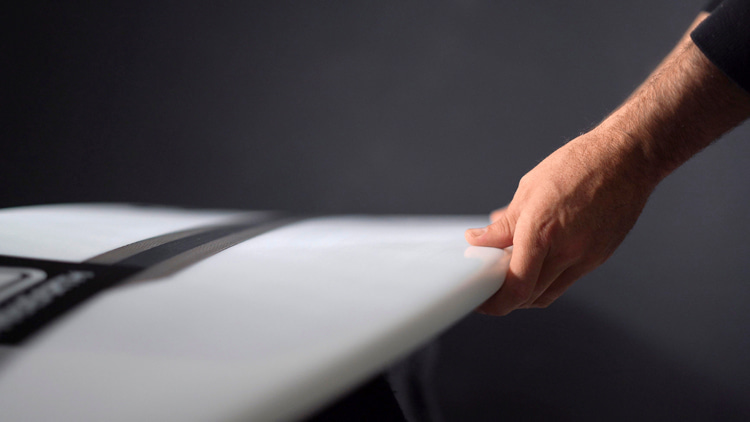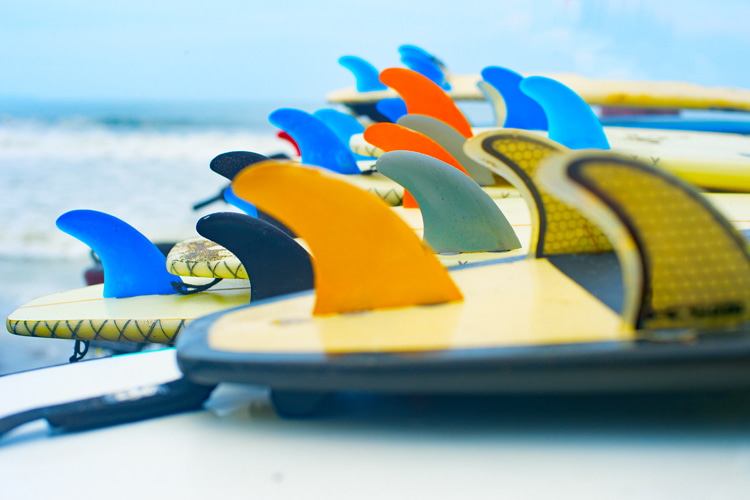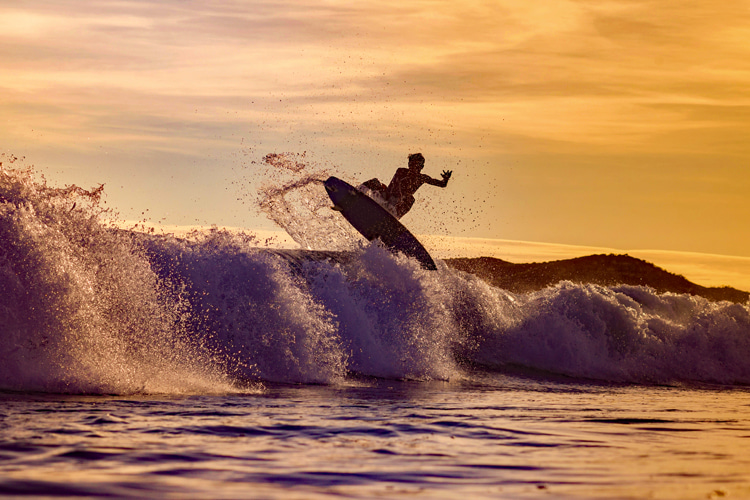I own around ten surfboards. They're all different and range from 6' to 8'2''.
Unfortunately, the only surfboard that I don't have with me - but would pay good money for it - was the first I got when I was around 14 years old - a classic mistake.
Today, I am 44 and have been surfing for 30 years.
Every year, I learn something relevant, and hopefully, each one of those constructive layers gets reflected in my surfing.
I am one of those who think our wave riding skills will only get better with age, even though our body no longer responds the way we want.
In surfing, grey matter matters.
At 20, you could be catching more waves than a 30, 40, or 50-year-old surfer, but that doesn't necessarily mean you're getting the best and the most out of each wave.
Wave reading skills, one of the areas I like to think I'm better at, are key to selecting the right wave of the set or positioning yourself in the lineup.
However, recently, while celebrating my 30th year of surfing, I learned another valuable lesson.
I have always bought and ridden polyurethane (PU) foam and polyester resin surfboards.
I never questioned it because when I started surfing, there were not too many options (even though my first surfboard was a sandwich-type construction, Mike Davis).
PU-based surfboards dominated over 99 percent of the market, at least until the mid-2000s.

My First EPS/Epoxy Experience
Then, suddenly, longboarders and paddleboarders shared one of their secrets with the shortboard community.
"Guys, there's a lighter and more durable type of foam and resin you could use to build your boards. Try expanded polystyrene (EPS) and epoxy resin," the long board users revealed.
To be honest, for nearly a decade, I didn't pay attention to "the revolution" taking place in the surfboard-shaping world.
Actually, I may have deliberately ignored it because I couldn't find a reason why I should ask my local surf shop for a test drive.
"I'm happy with my favorite surfboard's performance. Why should I waste my time with marketing stunts?" I thought.
In July 2011, though, I bit the bait. My quiver was expanding quickly, and I decided to open my mind to new concepts and technologies.
And so, I bought my first EPS/epoxy surfboard for around $300.
Because I didn't want to spend tons of money on something that I wasn't so sure about, I visited a well-known French sports retailer and purchased my first "new generation" wave-riding vehicle.
My first experience riding an EPS/epoxy surfboard was terrible. The first thing I didn't like was the ultra-slippery deck.
Because I didn't cover both rails with a thick and strategically placed layer of wax, my hands were always sliding every time I tried to pop up on my latest acquisition.
It was really annoying and enough to put an end to all hopes of a stellar inaugural session with that supposedly magical wave-riding tool.
But there was more. Every time I took off on a wave and pumped the board, I felt like it was slipping from under my feet.
In other words, I had no control over the EPS/epoxy deck, even though I was already an experienced intermediate/advanced surfer.
It felt like the board wanted to go faster and didn't obey his master.
"Is this what a revolutionary material feels like?" I thought to myself while simultaneously regretting the decision to follow the market forces.
I gave it another try. Maybe it wasn't one of my best days, right? Wrong. I absolutely hated it. Again. What a disgraceful decision.
The truth is that I had always felt comfortable with any board, even when I swapped sticks with friends in the lineup.
And it was not a problem of shape - this EPS/epoxy thing felt like a real, in-your-face scam.
I didn't want an all-around board that wouldn't respond to my commands, especially in wintertime Atlantic Ocean sessions.
And so I swallowed my pride and admitted it was a pricey mistake. It rarely happens, but this was one of those bitter moments.
"This is what I call a bad surfboard. Period. I am not going to ride it anymore. Sorry, but that's not for me," I told my wallet.

Giving a "Bad" Surfboard Another Try
The 6'8'' EPS/epoxy surfboard remained untouched and abandoned in the storage room for ten years - 2011-2021.
After surviving 365 pandemic days, my new self came out of a prolonged lockdown wanting to get back to the water.
For reasons that I don't even know, in March/April 2021, the closest board to the storage room door was... "that EPS/epoxy thing."
One of the good things about aging is that we become more tolerant and open to people and things that we never liked or cared about.
And so, 3650 days later, the master released the beast for a walk in the park. He was feeling mellow and sorry for that long separation.
"Oh... OK. Come on. Let's give each other a chance," I told the slippery and strangely shiny blue deck.
And so I got to the beach, put my wetsuit on, and took the renegade out of the bag. It was still covered with a ten-year-old layer of wax.
The board was in perfect condition; the leash was rotten. I laughed.
"Well, let's do this. There's no other way now," I mumbled.
This time, I made sure my EPS/epoxy had enough wax - everywhere - so that I could enjoy my comeback after such a difficult period in everybody's lives.
Paddling out, I thought it was not that bad. And so I sit and wait for the first set. Not bad, either.
As soon as I started paddling for my first wave, I was impressed.
"Wow! Even after a long period away from the water and with my fitness levels at an all-time low, I can still get into any waves I want," I initially pondered.
Believe it or not, I only needed two, three, or four strokes. My quiver's outcast was helping me get into the wave in a way no other board ever did.
As I stood up, I managed to position my feet in a place where I could counterbalance the board's natural speedy instinct.
"Well done, madam. Nice job. I am officially impressed," I told the board.
Then, a surreal moment takes place. The rotten leash, which had spent ten years inside a board bag, snapped.
"No worries, my dear old new board. Time to enjoy our time together leashless!"
And so I continued for another half an hour.
My first surfing session after the lockdown had just been a success, courtesy of a vehicle I once deemed bad, poor, and second-class.

Adapt: Lesson Learned
A few hours later, I reflected on the lesson I had learned. I concluded that there is no such thing as a bad surfboard.
There might be a few poorly-shaped boards or watercraft built from inferior materials. They sure exist.
But, in most cases, it's all about choosing a specific shape, outline, or size for a particular type of wave.
People make a lot of mistakes when choosing (new) surfboards.
And we, as surfers, have to make an effort and adapt our style or experience to subtle or slightly more radical changes in surfboard features.
Is it a tough challenge? It certainly is.
Are there surfers who will never get used to pre-determined shapes, cores and materials? Definitely.
But "bad surfboards" are often an excuse for our ignorance, lack of skills, and determination.
A "bad surfboard" for me could be the "best surfboard" in the world for thousands of other surfers.
May surfing teach me many lessons throughout life. I loved this one.
Words by Luís MP | Founder of SurferToday.com
